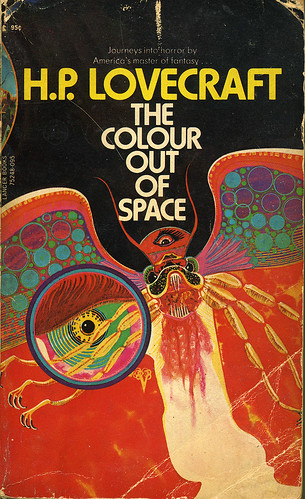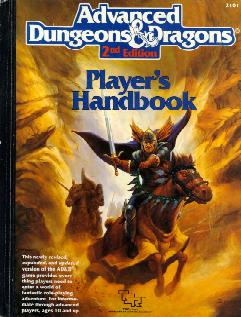First allow me to set this up a bit. I promise there won't be too much exposition, but I feel some is necessary to get the full effect of the scenario. This particular heroic effort occurred in our play by post game. A 2nd edition AD&D game set in Forgotten Realms. The party was originally sent out on a mission to find a group of bandits attacking traveling merchants on the High Road between Neverwinter and Waterdeep. They soon discovered, through a series of incidents and encounters, that these weren't just bandit raids, but rather part of a large, elaborate plot involving the Arcane Brotherhood of Luskan, bitter enemies of Neverwinter, and the Eldreth Veluuthra, an ancient elven organization bent on the elimination of all humans and half-elves from Toril.
So, the main "villain" in this particular adventure has been a 3rd level elf fighter. He's not exceptionally well armed, being only 3rd level, of course, but he's been able to outwit and remain a step ahead of the party for essentially the entire adventure up until last night. The party had managed to track him down to a small village south of the Neverwinter Wood where after much difficulty they finally managed to capture him. He was to be executed per the law in the village for his crimes (considering the party contains a few lawful good types.)
Well, the elf had concocted an escape scheme with several of the "chaotic" members of the party. The plan being that he would give them all sorts of information that would guide them to the bigger picture of this whole nasty plot to take down Neverwinter, if they simply released him under the guise of an escape. The party agreed, however, also consorted behind his back to double cross and kill him after gaining the information they needed.
The elf played on the emotions of one particular character in this group, a thief, who was supposed to be in on the plan to double cross him. Instead, the thief decided he would actually try to help the elf escape with his life, essentially double crossing his own friends in the process, but in such a way as to make it seem the elf actually did escape.
So, the plan was set into motion. The ranger stood guard outside the stable where the elf was being held captive, the thief would question the elf in the stable (and subsequently release him), and the fighter/mage would stand outside awaiting the elf to flee where he would pop him with a few arrows.
So, the thief obtained the information from the elf, and cut his bonds. He then cut his own arm with his dagger, gave the dagger to the elf, and released two horses, slapping them on the rear, causing them to bolt out of the stable. The elf then ran to the back of the stable and hid in a stack of hay amidst the confusion. The ranger had to duck out of the way to avoid being trampled while the fighter/mage watched on in disbelief from his vantage point outside. The thief ran out holding his arm saying the elf had donned his magical cloak, which rendered him invisible (a lie), and was headed to the inn to take out one of his rescued prisoners who was now recuperating.
The fighter/mage fired a few arrows at the horses to ensure the elf wasn't riding on one of their backs while being "invisible." He then went with the thief to the inn. The ranger, played by my friend Ron, who also happens to be one of the best DM's I've ever had the privilege to play under through the years, watched the thief and the fighter/mage run into the inn. He then used his tracking to find a set of tracks leading to the back of the barn. And so our heroic moment begins.
The ranger, whose name is Bazhur, closed the stable doors, but did not lock them. He then drew his weapons and stood in the center of the stable and issued a challenge to the still hidden elf. This is what he wrote:
Bazhur smiles to himself, closing the doors to the stables (if there are any) and drawing his blade and axe.
"Did you know, elf, that in my land even the condemned are shown hospitality? The flesh may commit sins, yes, sadiiq. But the soul will one day return to the world; perhaps even into the body of a loved one, ally, or friend. Because of this, one must show generosity, even to one's enemies. It is why I gave you water, even though my blades were ever more thirsty for your blood."
He stands near the center of the stables.
"You have but to slay me to gain your freedom. I will not call out for the others, elf. If you slay me, you may easily don my cloak and escape unseen from this town. These men will not be able to track you without my aid. Slay your last human this day, and know freedom once more."
After a few moments the elf stepped out of the back of the stables, and approached Bazhur. The ranger even retrieved the elf's sword, a magical long sword, and gave it to his opponent. We had some out of character discussion and Ron knew he was greatly outmatched in this combat. The elf was of a higher level with a magical blade, and was an incredibly cunning warrior.
Despite the fact that he knew as a player he was out matched for a one-on-one combat with no assistance, he stood his ground, because that's what heroes do. The next few moments will live on in gaming infamy for our group forever. I had already decided the elf's actions would be to simply use his tumbling ability, making him practically impossible to hit for Bazhur, leap over the ranger, and exit out of the unlocked stable door and flee.
We rolled initiative and Bazhur won the round. He took his first swing. 20. Critical hit dealing double damage. In the first strike of the game, Bazhur hit him for 12 damage (of which the elf only had 17 hit points). The elf, crippled by the critical hit, was unable to tumble effectively, and because he had chosen to tumble (giving up combat for the round), Bazhur could roll the rest of his attacks. 19. He dealt 5 damage with his shortsword and the battle was over. The elf fell to the ground, not having inflicted a single wound to his opponent.
Bazhur then approached the dying elf and asked him where he wanted to be taken to be buried. In his dying breath, the elf muttered "Evermeet," and Bazhur vowed to ensure he would have the proper funeral of an elven warrior.
We were both in shock at how the dice rolls went and sat in amazement at the pure epicness of the encounter. The elf, who had plagued the party for months of playing time, was taken down in one of the greatest combats I've ever rolled as a DM. Once the rest of the party figured out what happened, they were in utter disbelief as well.
Heroic moments create great memories. Ron put his 1st level ranger against a cunning and more experienced foe in one brilliant display of heroism, and overcame the odds. That's what true gamers do. Sometimes you lose, but when you win, it creates memories that can last a lifetime. In my opinion, this is what makes old school gaming so great. Or maybe I'm taking a game a little too seriously? Nahh.














